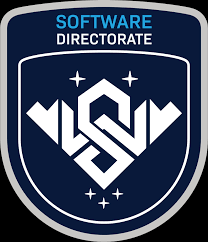Introduction
In an era where software is the backbone of nearly every industry, from defense and aerospace to healthcare and finance, organizations need more than just skilled engineers—they require visionary leadership. This is where the Software Engineering Directorate (SED) steps in. A Software Engineering Directorate serves as the command center of software innovation, policy-making, execution, quality assurance, and technological advancement within large, often mission-critical organizations.
This article explores the role, responsibilities, structure, and impact of a Software Engineering Directorate. It analyzes how SEDs operate across industries, their importance in achieving organizational goals, and the strategic challenges they face. Whether you’re in defense, government, corporate IT, or R&D, understanding the function and significance of a Software Engineering Directorate is essential for aligning technology with long-term success.
What Is a Software Engineering Directorate?
A Software Engineering Directorate is a specialized organizational unit responsible for overseeing software engineering strategy, standards, development, and life-cycle management across an enterprise. It typically comprises senior engineers, architects, managers, and technical advisors who guide teams toward delivering secure, efficient, and maintainable software systems.
The SED is not merely a technical group; it plays a strategic and operational leadership role. Its duties extend beyond development to include:
-
Strategic planning for software architecture
-
Enforcing software development life cycle (SDLC) best practices
-
Ensuring cybersecurity compliance
-
Overseeing software testing and quality control
-
Aligning engineering efforts with business or mission goals
Mission and Vision of a Software Engineering Directorate
Mission
To design, develop, and deliver high-quality, secure, and scalable software solutions that support the organization’s mission and business objectives.
Vision
To be a center of excellence that drives technological innovation, fosters engineering leadership, and ensures software aligns with strategic organizational needs.
Core Functions of a Software Engineering Directorate
1. Software Architecture and Design Oversight
The SED is responsible for defining and enforcing software architecture principles across teams. It ensures software systems are modular, scalable, and adhere to organization-wide technical standards.
2. Software Lifecycle Management
From requirements gathering to maintenance, the directorate manages the full software development life cycle (SDLC). This includes selecting appropriate methodologies (Agile, DevSecOps, Waterfall), tools, and platforms.
3. Standards and Compliance
To ensure consistency, reliability, and interoperability, the SED defines engineering standards, such as:
-
Coding conventions
-
Version control policies
-
Software documentation protocols
-
Regulatory compliance (e.g., ISO 12207, DoD 5000, GDPR, HIPAA)
4. Technical Governance
Through regular reviews and audits, the SED maintains technical quality and alignment across various projects. It acts as a decision-making body for major design and implementation choices.
5. Talent Development and Mentorship
The directorate often runs mentorship programs, engineering bootcamps, and technical workshops to grow internal talent and maintain engineering excellence.
6. Cross-functional Collaboration
It works with other directorates or departments such as security, hardware engineering, program management, and legal to ensure seamless integration of software into the broader system.
7. Innovation and R&D
Many SEDs operate dedicated labs or research units to prototype new technologies, evaluate tools, and conduct performance testing of emerging solutions like AI, edge computing, or cloud-native architectures.
Organizational Structure of a Software Engineering Directorate
1. Director of Software Engineering
Leads the entire directorate, sets vision and strategy, ensures alignment with business or mission goals, and manages resources.
2. Chief Software Architect
Defines software architecture frameworks, oversees system integration, and leads strategic design reviews.
3. Software Development Managers
Oversee specific domains or product areas (e.g., embedded systems, web apps, data systems). They manage teams of engineers, plan roadmaps, and ensure delivery.
4. QA and Testing Leads
Responsible for automated testing strategies, quality assurance, bug tracking, and release readiness.
5. DevOps Engineers
Support continuous integration, continuous deployment (CI/CD), and infrastructure automation.
6. Cybersecurity Engineers
Ensure code and architecture are compliant with secure development practices (e.g., OWASP, NIST standards).
7. Systems Engineers and Business Analysts
Translate business or mission needs into technical requirements and ensure traceability throughout development.
Industries That Rely on Software Engineering Directorates
1. Defense and Aerospace
Organizations like the U.S. Army, Air Force, and NASA operate software engineering directorates to manage mission-critical systems including:
-
Aircraft control software
-
Satellite communication systems
-
Defense simulations and logistics platforms
For example, the U.S. Army’s CECOM Software Engineering Center provides full lifecycle support for warfighting software, ensuring reliability and security under extreme conditions.
2. Government Agencies
Public institutions like the IRS or the Social Security Administration maintain SEDs to manage the software that runs national operations.
These directorates ensure:
-
Data privacy and compliance
-
Public service reliability
-
Fraud detection through AI models
3. Healthcare Systems
Hospitals and health technology firms utilize SEDs to develop and maintain:
-
Electronic Health Records (EHR) systems
-
Patient portals
-
Diagnostic tools using machine learning
They ensure software complies with HIPAA and offers real-time performance for critical healthcare operations.
4. Financial Institutions
Banks and fintech firms use software engineering directorates for:
-
Digital banking platforms
-
Risk modeling and fraud detection systems
-
Blockchain integration
These teams emphasize security, compliance (e.g., PCI-DSS), and scalability.
5. Tech and SaaS Companies
Large technology firms maintain directorates to manage complex ecosystems of products, microservices, and APIs. Their focus is on:
-
Speed to market
-
Scalability
-
High availability and system resilience
Key Benefits of a Software Engineering Directorate
Strategic Alignment
The SED ensures that engineering activities are aligned with organizational goals, whether those are mission success, customer satisfaction, or innovation.
Quality Assurance
By enforcing uniform development and testing standards, the SED ensures high software quality, reduced defects, and smoother deployments.
Risk Management
The directorate proactively identifies and mitigates technical and security risks across software systems.
Cost Efficiency
Central governance avoids duplication, promotes reuse of components, and increases return on investment (ROI) for software projects.
Talent Cultivation
SEDs attract and nurture top talent, providing clear career paths and a culture of continuous learning.
Technologies and Tools Used by Software Engineering Directorates
1. Version Control and CI/CD Tools
-
Git, GitLab, Bitbucket
-
Jenkins, GitHub Actions, CircleCI
2. Project and Requirement Management
-
Jira, Azure DevOps, Trello
-
Confluence, DOORS
3. Programming Languages
-
Java, C++, Python, JavaScript, Go
-
MATLAB and Ada (in defense applications)
4. Cloud and Infrastructure
-
AWS, Azure, GCP
-
Kubernetes, Terraform, Docker
5. Security Tools
-
Snyk, SonarQube, Checkmarx
-
Static and dynamic application testing (SAST/DAST)
6. Monitoring and Observability
-
Datadog, Prometheus, New Relic
-
ELK Stack
Challenges Facing Software Engineering Directorates
1. Legacy Systems
Maintaining and modernizing outdated systems while integrating new technologies is a persistent challenge.
2. Cybersecurity Threats
SEDs must stay ahead of evolving cyber threats, often requiring dedicated security teams and frequent audits.
3. Talent Shortages
The demand for experienced software engineers and architects frequently exceeds supply, especially in niche fields like embedded or real-time systems.
4. Changing Regulations
Compliance requirements vary across industries and regions, requiring constant updates to processes and documentation.
5. Scalability Issues
Designing systems that can scale horizontally without compromising performance or stability demands foresight and planning.
Best Practices for Managing a Software Engineering Directorate
Foster a Culture of Collaboration
Encourage cross-functional communication and integrated workflows between engineering, product, and operations.
Invest in Continuous Learning
Support certifications, workshops, and internal knowledge-sharing platforms to keep engineers up to date.
Prioritize Documentation
Maintain thorough documentation to ensure continuity and facilitate onboarding.
Embrace Agile and DevSecOps
Integrate agile practices and secure development workflows to enhance adaptability and response to change.
Measure Success with KPIs
Use metrics like code quality, delivery speed, incident response time, and customer satisfaction to measure performance.
Case Example: NASA’s Software Engineering Directorate
NASA’s Marshall Space Flight Center (MSFC) houses a robust Software Engineering Directorate responsible for mission-critical software for space exploration. Their responsibilities include:
-
Real-time software for spacecraft operations
-
Simulation software for mission planning
-
Safety-critical systems requiring zero-tolerance for failure
NASA’s SED emphasizes:
-
Peer-reviewed code
-
Formal verification and validation
-
Compliance with NASA-STD-8739.8 for software assurance
Their model is widely respected for balancing innovation with unmatched rigor.
Future of Software Engineering Directorates
As industries become increasingly digital and AI-driven, SEDs are expected to evolve in the following ways:
Greater Use of AI and ML
AI will assist in code reviews, test generation, and predicting software failures before they occur.
Software-Defined Everything (SDx)
SEDs will oversee the development of software that controls infrastructure, networking, and even organizational workflows.
Increased Focus on Sustainability
Green software development practices will be adopted to reduce energy usage and carbon footprint.
Global and Remote Collaboration
With distributed teams becoming the norm, SEDs will leverage collaborative platforms and asynchronous workflows for global operations.
Conclusion
The Software Engineering Directorate plays a vital role in shaping the success and resilience of complex organizations. Far from being just a technical unit, it acts as a strategic leader, quality enforcer, innovation hub, and risk manager. Whether it’s guiding the development of space exploration systems, powering digital transformation in healthcare, or fortifying financial software with AI, the impact of a well-led SED is profound.
As technology continues to evolve, the significance of such directorates will only grow. Organizations that empower their Software Engineering Directorates with the right people, tools, and autonomy will be best positioned to thrive in a software-driven future.

